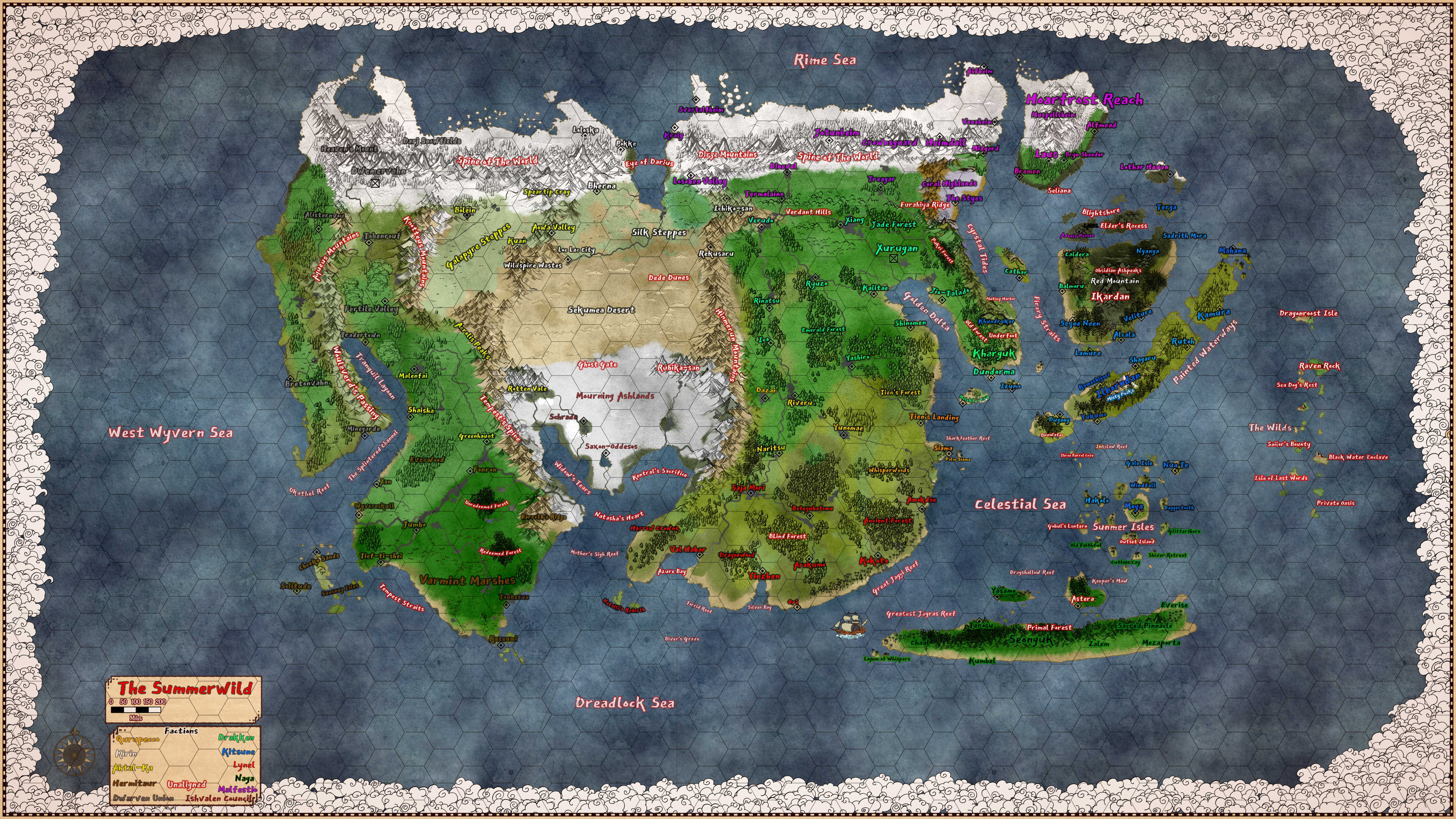Clawfane, Deep Sea Nomads
Clawfane
“My shell [family] and I have worked these fields for nearly a century. We
mean no harm to anyone. We ask for nothing from anyone and offer our
food and shelter to anyone seeking it – that is the way. Any who would
defile our lands, our people, or our rites would be our enemy until they
are no more.”
Grackak, clawfane farmer.
“I’d rather chew me own arm off than deal with a ‘fane. Do’ya’know I once
fell asleep whilst the damned things were talking about a simple trade?
Woke up to find they’d not near finished discussing the thing. That’s
when my First Mate attacked them. Now… look at us…”
Captain Halliban Caddespaddle, of the Bonny Prince
Partially related to the Chuul servitor race, clawfane are
sometimes called crabfolk. Isolationist by nature, these
exoskeleton-based crustacean humanoids build massive
fortresses of stone, shell, and cemented sand.
Their culture remains
obscure to most outsiders, but their ultimate goal is to harvest their
algae crops, study and researchn and live in peace.
When that peace is threatened, they become fierce warriors, who
tend to obliterate the threat to extinction before resuming their quiet
lives as farmers. This is perhaps a failing of the race, but they can be
exceptionally single-minded and tenacious. War with the clawfane
is likely to last decades, and although they have been known to
sign truces and peace-treaties, is it exceptionally rare and takes
tremendous skill to negotiate.
The language of the clawfane, known as Clawn, is a complex
series of uttered sounds and snapping of the pincer to make clicks
and banging noises. No other race can speak Clawn unless they have
two heavy objects to bang together, like coconuts or rocks, during
the conversation.
Adventuring
A clawfane might go adventuring to study the world around them.
Single-minded but also curious, the clawfane are aware of others
beyond their massive fortresses and knowledge is always useful.
Generally, permission must be given from the Clutch Mother, an
equivalent of a queen, before an individual is allowed to explore
and also given a time limit, usually ten to fifty years is considered
sufficient, to spend amongst the surfacers or non-clawfane.
Basic Information
Anatomy
One of their arms ends in a giant claw, the other in a pseudohand capable of gasping and manipulating small items. This
physical imbalance is not common in most humanoid species where
symmetry has resulted in successful species survival. The clawfane
however, evolved from their crab-like ancestors into humanoid
beings and have never questioned why they are so.
Ecology and Habitats
They create underwater vessels that serve as mobile homes, often times gathering in large air bubbles to trade with other Clawfane or other intelligent sea creatures
Their design
and architecture often represent a love of balance and symmetry,
perhaps a deep-seated desire or just a good sense of style.
Civilization and Culture
Naming Traditions
Clawfane Names
Generally impossible to pronounce without holding two pieces of
wood to bang together, the best approximations are presented here, and
considering the clawfane are asexual there is only one gender presented.
Claxba, Thadklap, Cluklape, Paplown, Thathatha, Babanux, Clathaba.
Lifespan
Age. clawfane can live remarkably long lives, often reaching 500 years or more. Adulthood begins for most clawfane with the fourth Molting, when a clawfane is too big to fit inside their own carapace and must shed it and grow a new one.
Remove these ads. Join the Worldbuilders Guild









Comments